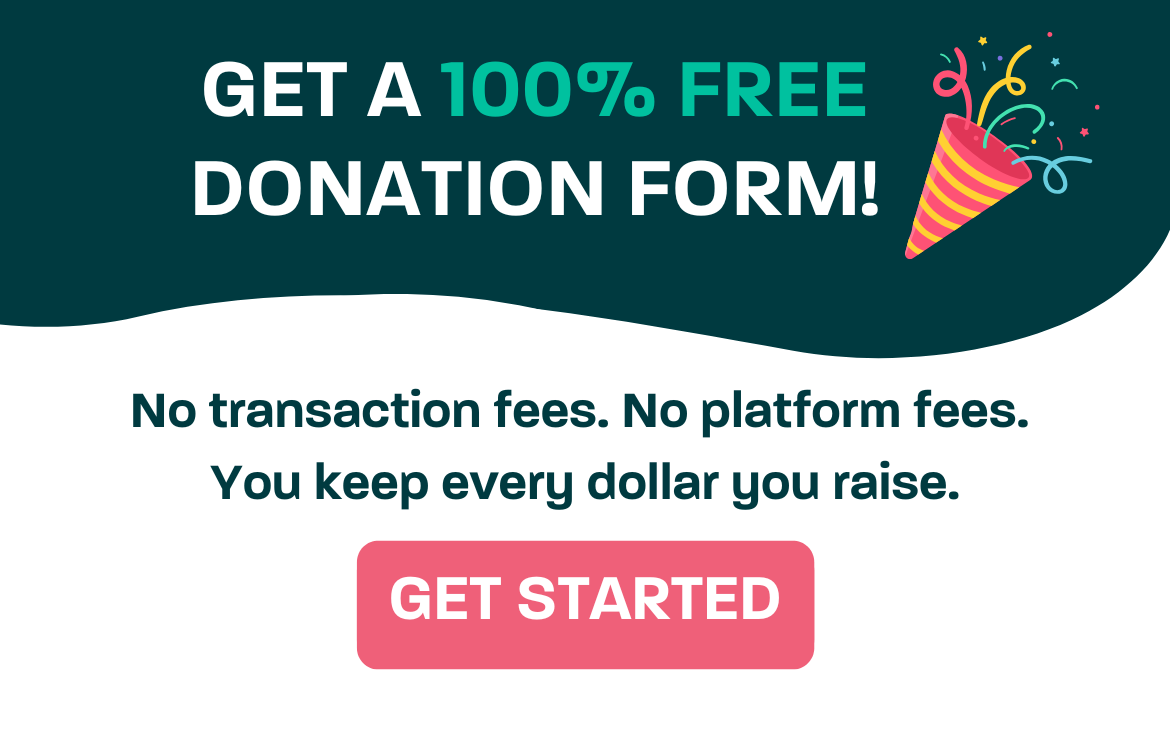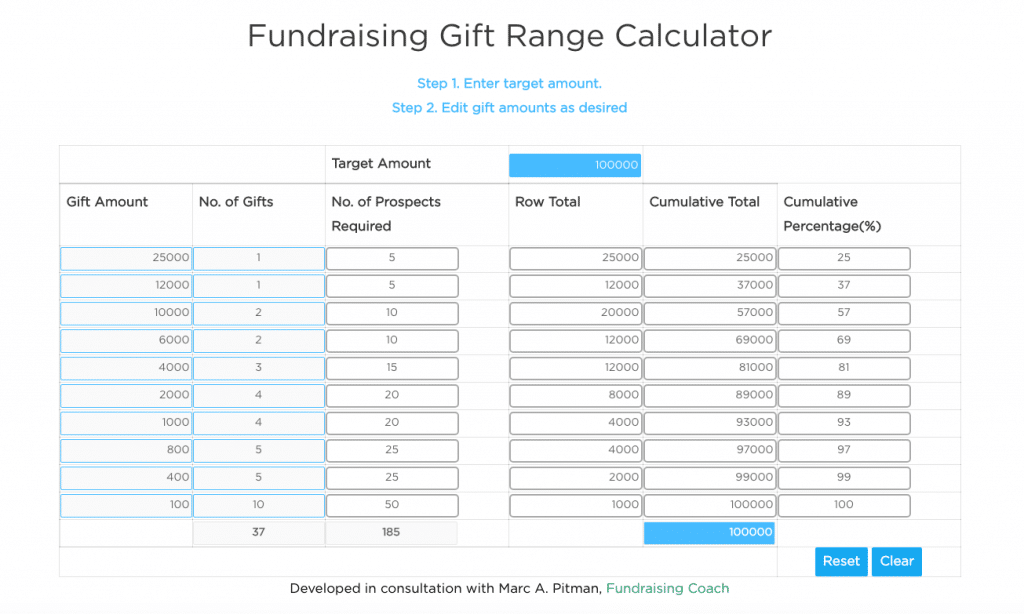Having a major gifts program is critical for any nonprofits, since a large portion of a nonprofit’s annual revenue usually comes from just a handful of major donors. If you don’t already have a major donor program, or you’re looking to grow your major gift fundraising, this guide is for you.
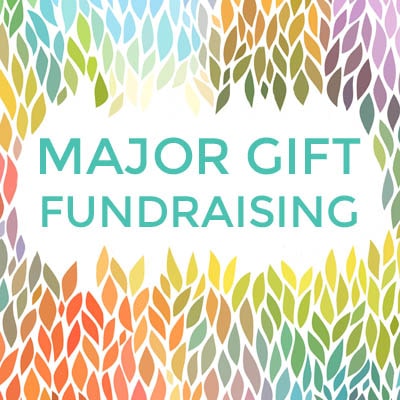
In this Guide, you’ll find tools and strategies for building and growing your major gifts program including:
- Building Your Case for Support
- Finding the Right Prospects
- Building Your Proposal & Making the Ask
- Getting a Gift Agreement
- Stewarding & Reporting Back to Donors
- Renewing the Gift
1. Building Your Case for Support
The first step in building your major gifts program is to develop your case for support. Your nonprofit’s case for support is the reason a donor should support your charity and should include information about your nonprofit, your mission or the problem you’re trying to solve and why, and information about your impact.
A case for support can be as simple as a pdf document with some photos or something that is more highly designed and looks like a short e-book. You can even have an online case for support.
Sample Case for Support
Check out Habitat for Humanity’s online case for support as an example of a digital case for support.
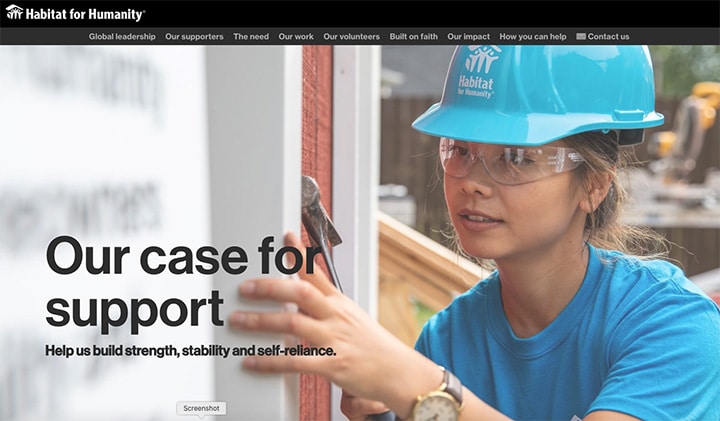
Here are some ideas for what to include in your case for support:
- A short history of your nonprofit
- Statistics related to your mission
- Stories, quotes, and photos from your beneficiaries
- A letter from your CEO
- Financial information for nonprofit
- Quotes or stories from other donors explaining why they give to your nonprofit
Your case for support will help you frame your major gift askes because it will be a resource for fundraisers to draw on for mission and impact information. It can also give you something physical that you can leave with any major gift prospects to read over.
2. Finding the Right Prospects
When you think of a major gift prospect, you’re probably thinking about finding new wealthy individuals who are philanthropically inclined, but your nonprofit’s donor database might be a better place to start!
Build your pipeline from within
One way to identify major gift prospects is to look at your current donors and see if you have any donors with the capacity to give at the major gifts level.
Someone who had already given $20 or $50 to your organization, and those who have given over a long period of time, are more likely to become major donors. Here are some donor characteristics to keep an eye on when looking for major donor prospects:
- Look at your annual and mid-level giving programs, major donors often start out by giving smaller gifts to test the waters before a larger charitable commitment
- Keep an eye on very loyal and consistent annual donors and assess their capacity to give
If you’re a major gifts officer, AI prospecting tools like Wisely can help you identify new prospects from within your database. Wisely mines your database for the best major gift prospects to add to your pipeline. It also tells you how likely they are to give, when, and how much.
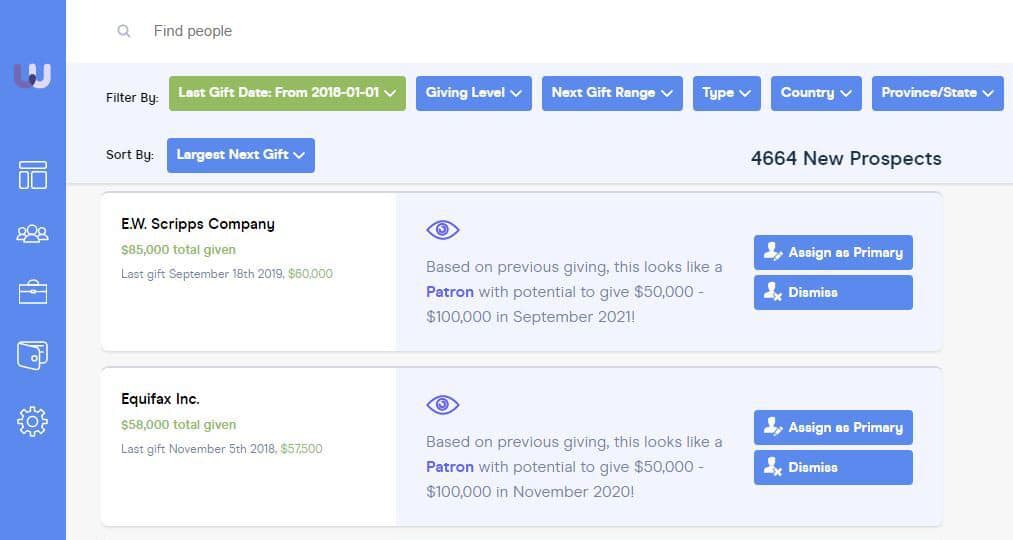
AI prospecting tools are starting to play a key role in major gifts fundraising, performing analysis and finding new prospects, while human fundraisers focus on the personal aspects of major gift fundraising.
Attracting new donors
Your major gifts program should also focus on attracting new donors. Build a profile of your ideal major gifts prospect, someone who is going to be interested in your mission and whose philanthropic goals align with your nonprofit’s goals.
Once you’ve got your list, conduct prospect research, making use of tools like databases, news articles, information found online, and more to find ideal major gift prospects for your nonprofit and build a profile.
In order to determine how many donors you need at each giving level, you can use a gift chart. Sumac’s Gift Range Calculator lets you create this gift chart automatically.
3. Building a Proposal & Making the Ask
Once you have a few prospects in the pipeline, it’s time for the major gifts officer to make connections and start crafting a unique giving proposals for each potential major gift donor.
Use the information you know about a major gift prospect either from prospect research or from your nonprofit CRM to craft a proposal you know will appeal to their interests. The proposal is different from your case for support because it is specific to this donor and their philanthropic goals.
Tips for proposal writing:
- Personalize it to your major gift prospect. Put their name on it! Make sure they know it was created just for them
- Align the ask to their philanthropic goals by highlighting specific impact points and why you think this is a good fit for a major gift from this donor
- Put a dollar amount asking for a 5 figure or more gift can be intimidating, but including a specific ask amount will help prime your major gift prospect for their gift, and it will be easier to tell them what their gift can do! It’s hard to show the impact if you don’t know how much money you’re going to have.
- Focus on the impact of the gift over the size and over the specifics. You might be super interested about the methodology of a research project, or the logistics of program delivery, but your donor is probably less interested in those aspects and more interested in what the outcomes are. The how is certainly important, but it’s not as important as the why.
- Preview of stewardship opportunities toshow your donors how they will be recognized for this major gift. Will they have their name included in the annual report or on a donor wall? Will you provide updates on the progress of the initiative they are funding or what the impact of their major gift has been on your nonprofit?
Scheduling a Meeting
Once you’ve found the people you’d like to approach, the next challenge is setting up a meeting. Ideally you want to meet with donors in person. To schedule a meeting, start with a letter or email (think carefully about your prospective donor to decide which is most appropriate), then follow-up with a phone call to arrange something convenient for both of you. The letter or email should sounds something like this:
Hello Mary,
Well, it’s that time of year again and we are trying to raise $10,000 for our annual food drive so that [insert your needs and benefits].
Last year you made a very generous donation of [insert amount] that helped us provide food to many needy families at Christmas time. This year, we hope to raise 25% more in order to [insert benefit]. To meet this goal, we are asking the help of our most generous donors.
I would love the opportunity to meet with you in person to give you an update on last year’s drive, share with you some of our current challenges and ask for your support.
I will be reaching out in the next couple of days with a phone call to try to schedule a meeting time that is convenient for you.
Thank you in advance for your ongoing help and support!
It’s important that the meeting be presented as a discussion that the donor can add value to, and not just an ask. You want to make the donor feel like they are important to the organization, and not just as a source of revenue. At the same time, however, it’s important to be honest. The purpose of the meeting is, in fact, to ask for their support, so don’t leave that out.
4. Getting a Gift Agreement
After closing a major gift the last thing you want is to ruin the warm and fuzzies by talking about legal and other administrative requirements. However, a gift agreement is the best way to protect your nonprofit and to ensure your donor gets what they want, and expect, out of their giving experience, so you’ll want to include this in your major gifts fundraising strategy.
A gift agreement will help your nonprofit:
- Set timelines for both your major gift donor and your nonprofit. Including a timeline for the installments in the gift agreement, if the gift is in installments, will keep the donor on track with their pledge payments. And including timelines for your nonprofit to send out reports and execute milestones related to the gift will keep you on track and help your donor envision the outcome of their major gift over time.
- Manage expectations, f the work that goes into carrying out the donor’s wishes is more than your nonprofit can handle it’s going to lead to disappointment for you and for your major gift donor.
- Protect your nonprofit down the line, especially if this is a major gift that will be fulfilled over many years. You’ll have the agreement on file so it’s always clear what the terms were even if you have staff turnover.
- Create a positive and professional experience for your donor. An organized gift agreement will put your major gift donor at ease because they’ll know that your nonprofit has a record of their expectations and it will act like a roadmap to carry out the important work they want their major gift to carry out.
The Meeting & The Ask
The final challenge is the meeting itself. When you show up for the meeting, there’s no reason to be nervous. Believe in what you’re doing, in the objective, the benefits and be humble and honest about it. Remember, if you have conviction in what you’re doing, it will show.
Start by talking about general topics to break the ice. Comment on their home, family, the weather, etc. You could also talk about the nonprofit in general. Ask for their feedback and suggestions about your organization and its mission, how they see your organization, and what they think of your fundraising efforts.
Then get into the reason you’re there and what the goal is.Talk about their interests and explore their motivation for giving. Do they give because they want to give some of their wealth back, because they have an emotional connection to your cause, or simply for the tax benefits? Once you understand their personal motivation, you can talk to them in terms that make sense to them and compel them to act.
Next, talk about how their help is needed and the benefits a donation from them would have; benefits, of course, that are directly related to their motivation for giving. At some point of course, you’ll have to actually ask for a specific amount. You may want to bring a gift chart with you so you can show them specific giving levels, and how they can fit in the solution. See How to Construct a Gift Chart & Use it to Secure Major Gifts for more on this.
When asking for a major gift, you’ll likely run into some objections. Don’t worry, just take a deep breath and think about the best response. According to Buzz Harris in “A Small Guide to Large Gifts: Major Donor Fundraising” the donor will say one of six things. Here is how you should respond to each:
1) Yes! – Great! Thank her again, and ask how and when she would like to make the gift.
2) I need to think about it – Okay. Ask her if there are any questions you could answer now to help her in her consideration, then ask if you can call her on (pick a specific date in 3-5 days) to hear her decision.
3) I need to ask my partner/spouse/etc. first – Okay. Ask if there are any questions you could answer now to help them both in their consideration, then ask if you can call her on (pick a specific date in 3-5 days) to hear their decision.
4) That’s a lot of money – Yes, it is a lot of money. There are not many people we could ask for such a gift. (She will then move to one of the other five responses).
5) That’s too much – What would be more comfortable for you?
6) No – No means no. Honor the refusal, and thank her for her existing support.
Another possible response when someone says “that’s too much” would be to suggest a pledge. A pledge lessens the impact of a significant contribution, since the donor could pay over an extended period of time.
Regardless of whether the donor gives what you expected, more, or less, be sure to make them feel really good about what they’re doing, and be absolutely sure to follow up with them on the success of the campaign
5. Steward & Report Back to Donors
Once the proposals are accepted, the gift agreement is finalized, and your major donor starts to fulfil their pledge or has made their donation, it’s time to steward this major donor and report back on the impact of their donation.
Reporting back to major donors is not just critical if you want them to give again, but reporting and recognition requirements might be in the major gift agreement. Regardless, you should always include stewardship in your major gift fundraising strategy.
If your gift agreement didn’t specify stewardship, or only included financial reports on the use of the gift, here are some stewardship ideas for major gift donors:
- Include their name in your annual report
- Send a thank you letter or thank you video through email from a beneficiary of your organization
- Invite exclusive major gift donor to webinars with your nonprofit’s CEO
- Schedule a thank-you phone call from your CEO, a member of senior leadership or a board member
6. Renewing the Gift
Wait, you’re not done. You’ve got to get ready to ask again!
After someone has given a major gift to your organization, you might think they won’t want to make another large gift, or that they need some time until you ask them again.
While your major gifts officer shouldn’t run out the minute the last pledge payment is made to ask a donor for another major gift, you should start preparing to make another ask. If you stewarded your major gift donor and you showed them the impact of their gift, they will be waiting for the right opportunity to give to your nonprofit again.
You should also consider other ways that this donor can give to your nonprofit outside of major gifts, like leaving a gift in their will to your nonprofit or, if they are in a position to be a corporate sponsorship through their business or workplace.
Keep following best practices for your major gift fundraising program, using new tools like AI to grow your major gifts pipeline, solicit more donors with the right ask and the right time, and you’ll be able to raise the funds you need for your important work!
